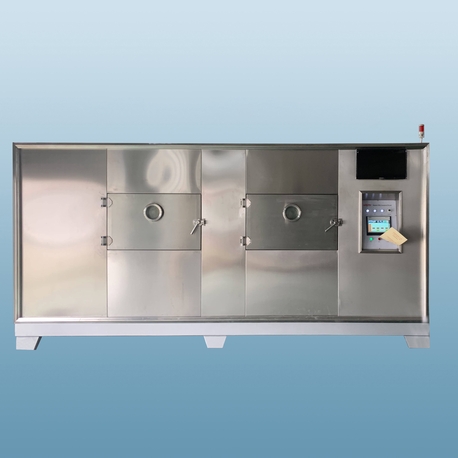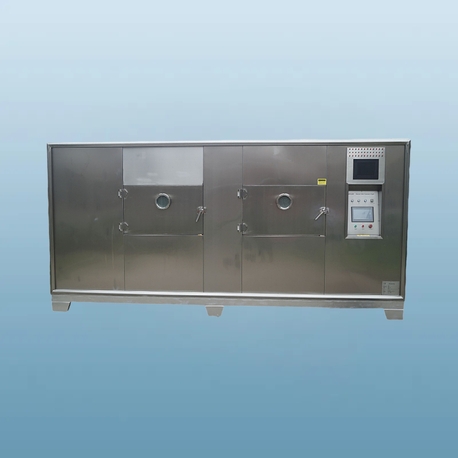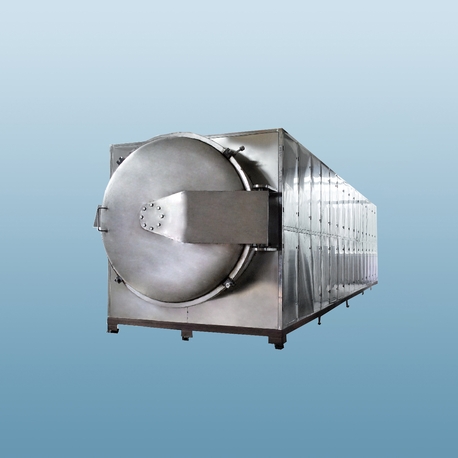Have you ever spent hours waiting for your clothes to dry, only to find them still damp or overly wrinkled? Or perhaps you’ve worried about the high energy bills from running a conventional dryer multiple times a week? If so, you’re not alone. Many people are searching for more efficient, faster, and cost-effective drying solutions. Enter the microwave dryer—a groundbreaking technology that is transforming how we approach drying tasks. Unlike traditional methods that rely on heated air, a microwave dryer uses electromagnetic waves to evaporate moisture quickly and evenly. This innovation isn’t just a minor upgrade; it’s a leap forward in drying efficiency, offering benefits that span from household laundry to industrial applications. In this article, we’ll dive into seven key aspects of microwave dryer technology, explaining how it works, why it’s gaining popularity, and what you need to know before considering one. By the end, you’ll understand why this device is more than just a trend—it’s a smart investment for the future.
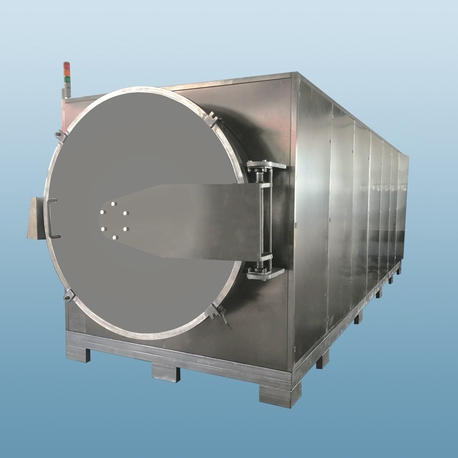
How a Microwave Dryer Works: The Science Behind the Innovation
At its core, a microwave dryer operates on principles similar to a microwave oven, but with adaptations for drying fabrics, food, or other materials. Instead of using hot air to slowly remove moisture, this device emits microwave radiation that targets water molecules directly. When the microwaves penetrate the material, they cause water molecules to vibrate rapidly, generating heat from within. This internal heating process evaporates moisture efficiently without overheating the surrounding air or damaging delicate items. For instance, in a laundry context, a microwave dryer can dry clothes in a fraction of the time compared to conventional dryers, as it doesn’t rely on external heat transfer. This method also reduces the risk of shrinkage or wear, since the temperature is controlled more precisely. Additionally, many microwave dryer models include sensors to monitor moisture levels, automatically adjusting the drying cycle to prevent over-drying. By harnessing this targeted approach, the microwave dryer achieves superior energy efficiency and consistency, making it a standout in the world of drying technologies.
Key Benefits of Using a Microwave Dryer
The advantages of a microwave dryer extend far beyond just speed. First and foremost, it significantly cuts down drying time—often by up to 50% compared to traditional methods. This is because the microwaves work from the inside out, eliminating the need for prolonged air circulation. Secondly, a microwave dryer is highly energy-efficient. By directly heating water molecules, it minimizes heat loss, which can lead to lower electricity bills and a reduced carbon footprint. For eco-conscious consumers, this makes the microwave dryer an attractive option. Thirdly, it preserves the quality of materials better. Fabrics come out softer and less wrinkled, while food items retain more nutrients and texture when dried this way. Moreover, the microwave dryer is versatile; it can handle a variety of materials, from clothing and towels to herbs and grains, without requiring different settings. Lastly, many users appreciate the compact design, which fits well in small spaces like apartments or RVs. Overall, the microwave dryer offers a blend of performance, efficiency, and convenience that traditional dryers struggle to match.
Energy Efficiency and Environmental Impact
One of the most compelling reasons to switch to a microwave dryer is its positive effect on energy consumption and the environment. Traditional dryers are notorious energy hogs, accounting for a large portion of household electricity use. In contrast, a microwave dryer operates on the principle of direct energy transfer, meaning it uses less power to achieve the same—or better—results. Studies have shown that microwave-based drying can reduce energy usage by 20-30% compared to conventional methods, as it avoids heating the entire drum or surrounding air. This efficiency translates to lower utility bills and a smaller ecological footprint. Furthermore, the microwave dryer often incorporates smart features, such as automatic shut-off when drying is complete, which prevents wasted energy. From an environmental perspective, this technology supports sustainability goals by reducing greenhouse gas emissions associated with electricity generation. As more people seek green alternatives, the microwave dryer stands out as a forward-thinking choice that aligns with modern eco-friendly lifestyles.
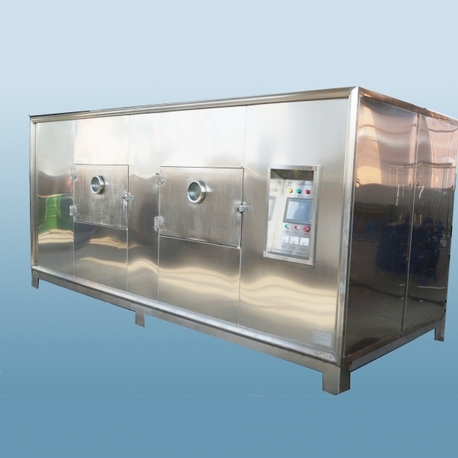
Safety Features and Considerations for Home Use
When it comes to any appliance involving microwaves, safety is a top concern. Fortunately, modern microwave dryer designs include multiple safeguards to ensure user protection. For starters, these devices are built with shielded compartments that contain microwave radiation, preventing leaks that could pose health risks. Additionally, they often feature child locks and temperature controls to avoid accidents. In terms of fire safety, a microwave dryer is generally safer than traditional dryers because it doesn’t rely on high external heat, reducing the risk of lint ignition or overheating. However, users should still follow basic precautions, such as cleaning filters regularly and avoiding metal objects, which can cause sparks. It’s also important to note that a microwave dryer may not be suitable for all materials—for example, some synthetics could melt if exposed to intense microwaves. Therefore, always check manufacturer guidelines. By understanding these aspects, you can enjoy the benefits of a microwave dryer while minimizing potential hazards, making it a reliable addition to any home.
Applications in Various Industries
The versatility of the microwave dryer makes it valuable across multiple sectors, not just in household laundry. In the food industry, for instance, it’s used for drying fruits, vegetables, and grains quickly while preserving flavor and nutritional content. This application helps reduce food waste and extends shelf life. In textiles, a microwave dryer is employed for drying fabrics and yarns without causing damage, which is crucial for high-quality garment production. The pharmaceutical and chemical industries also benefit, as this technology allows for precise drying of sensitive materials like powders or tablets, ensuring consistency and purity. Even in agriculture, a microwave dryer can be used for crop processing, such as drying seeds or herbs, improving efficiency in post-harvest operations. This wide range of uses highlights the adaptability of the microwave dryer, demonstrating that it’s not just a home appliance but a tool for innovation in various fields. As technology advances, we can expect to see even more applications emerge, further solidifying its role in modern industry.
Maintenance and Longevity Tips
To get the most out of your microwave dryer, proper maintenance is essential. Unlike conventional dryers that require frequent lint trap cleaning, a microwave dryer has fewer moving parts, which means less wear and tear. However, you should still perform routine checks, such as inspecting the door seals for tightness to prevent microwave leakage. Cleaning the interior with a damp cloth after use helps remove any residue that could affect performance. It’s also wise to avoid overloading the unit, as this can strain the components and reduce drying efficiency. For long-term durability, consider having a professional service the microwave dryer annually, especially if you use it heavily. By following these simple steps, you can extend the lifespan of your device and ensure it operates at peak performance. Many users find that a well-maintained microwave dryer lasts longer than traditional models, thanks to its robust design and fewer mechanical issues.
Future Trends in Microwave Dryer Technology
The evolution of the microwave dryer is far from over. Researchers are continually exploring ways to enhance its capabilities, such as integrating IoT features for smart home connectivity. Imagine controlling your microwave dryer via a smartphone app, receiving notifications when drying is complete, or adjusting settings remotely. Another trend is the development of more compact and affordable models, making this technology accessible to a broader audience. Additionally, advances in material science could lead to microwave dryer units that handle even delicate items with greater precision, reducing the risk of damage. Sustainability is also a driving force, with efforts focused on improving energy efficiency and using recyclable materials in construction. As these innovations unfold, the microwave dryer is poised to become a staple in homes and industries alike, offering smarter, greener drying solutions. Keeping an eye on these trends can help you stay ahead in adopting this transformative technology.
In summary, the microwave dryer represents a significant advancement in drying technology, offering speed, efficiency, and versatility that outperform traditional methods. From its scientific workings to its broad applications and future potential, this device is more than just a convenience—it’s a step toward a more sustainable and efficient lifestyle. Whether you’re looking to upgrade your home laundry setup or explore industrial uses, the microwave dryer is worth considering for its myriad benefits.
Frequently Asked Questions About Microwave Dryers
Q1: What is a microwave dryer and how does it differ from a conventional dryer?
A1: A microwave dryer is an appliance that uses microwave radiation to dry materials by directly heating water molecules from within, resulting in faster and more even drying. Unlike conventional dryers that rely on heated air and tumbling, a microwave dryer operates with less energy and reduces the risk of damage to fabrics or other items.
Q2: Is a microwave dryer safe to use for drying clothes and other household items?
A2: Yes, a microwave dryer is generally safe when used according to manufacturer instructions. It includes safety features such as radiation shielding, automatic shut-off, and moisture sensors to prevent overheating. However, users should avoid placing metal objects inside and follow guidelines for specific materials to ensure safe operation.
Q3: How energy-efficient is a microwave dryer compared to traditional dryers?
A3: A microwave dryer is highly energy-efficient, often reducing energy consumption by 20-30% compared to traditional dryers. This is because it directly targets moisture without wasting heat on the surrounding air, leading to lower electricity bills and a smaller environmental impact.
Q4: Can a microwave dryer be used for purposes other than laundry, such as food drying?
A4: Absolutely. A microwave dryer is versatile and can be used for various applications, including drying food items like fruits and herbs, as well as in industrial settings for textiles or pharmaceuticals. Its precise control makes it suitable for sensitive materials that require careful drying.
Q5: What maintenance does a microwave dryer require to ensure long-lasting performance?
A5: Regular maintenance for a microwave dryer includes cleaning the interior and door seals, checking for any obstructions, and avoiding overloading. It’s also recommended to have periodic professional inspections to ensure all components, such as sensors and shielding, are functioning properly. This helps maintain efficiency and extends the appliance’s lifespan.


